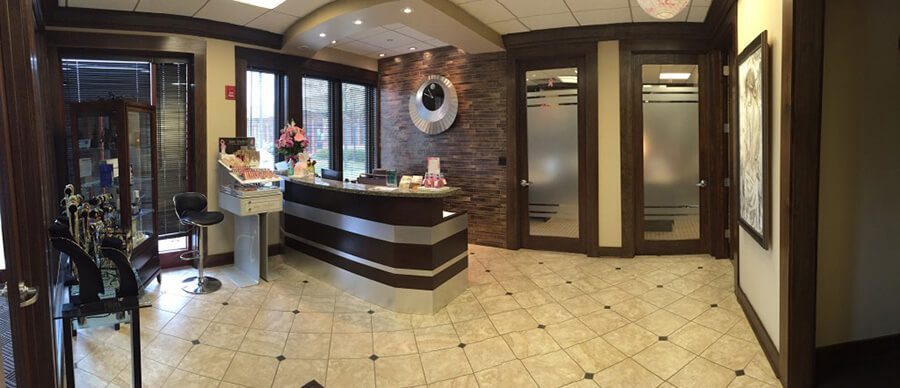Posted in Breast Surgery
 Every woman has an ideal look she aims for when it comes to her breasts. A simple way to think about it is in terms of lingerie departments. There is a plethora of bra styles available so that a woman can achieve her ideal look. Push-Ups, demi cups, full support, light support, fully padded, lightly padded, unpadded, underwire, wire-free, minimizers with comfort straps, ones that eliminate the look of back fat, and many more. Bras are miracle makers, they really are. Do you know what else can make miracles happen for breasts? Plastic surgery. Breast augmentations, lifts, and reductions are real life changers.
Every woman has an ideal look she aims for when it comes to her breasts. A simple way to think about it is in terms of lingerie departments. There is a plethora of bra styles available so that a woman can achieve her ideal look. Push-Ups, demi cups, full support, light support, fully padded, lightly padded, unpadded, underwire, wire-free, minimizers with comfort straps, ones that eliminate the look of back fat, and many more. Bras are miracle makers, they really are. Do you know what else can make miracles happen for breasts? Plastic surgery. Breast augmentations, lifts, and reductions are real life changers.
How Do I Know If I Am a Candidate for Breast Enlargement?
The first step in determining if breast enlargement is right for you is to make a consultation with a board-certified plastic surgeon. When you go to your appointment, make sure you leave there knowing the answers to the following questions:
How Do You Know What Size and Type of Implant to Use?
The key for each patient is to seek out a surgeon who takes the time to select the correct shape, texture and size implant for your body. At Spring Ridge Plastic Surgery, Dr. Schlechter and Dr. June take their time to ensure the implant selection is the ideal match for each patient, all the while explaining to you the rationale for his or her recommended choice. There are other considerations including:
- Your desired look
- Your body frame
- Your skin laxity
- Breast asymmetry
A master of breast augmentation not only performs the procedure but also has an eye and experience to guide you through the implant selection process. Once your doctor proposes a size range to fit your body and your desired result, you will meet your cosmetic coordinator who will further help you decide your size.
You will try on implants and get to see what you will look like. We caution that because the number one reason for breast augmentation revision is to change implant size: so it is most cost effective to get it right the first time. This is, in essence, a permanent decision, so you are encouraged to take your time in deciding.
How Do You Insert the Implant and What Are the Pros and Cons of the Different Approaches?
There are various ways to perform breast augmentation surgery, an underarm approach, through the belly button or nipple, or at the inframammary fold. At your consultation, the doctor should explain the different approaches as well as the risks and benefits involved with each one.
The Underarm Approach
To minimize visible scarring, the underarm or trans axillary incision technique requires placement of an incision in the extreme upper, outer region of the breast, near the juncture (“pit”) of the arm to the torso. The incision is invisible even with the arm raised. Implants are usually placed below the muscle. The drawback to this method is that those who want larger implants are at a greater risk of nerve and tissue damage as the implant travels to its permanent position.
The Belly Button Approach
The belly button technique (also called Transumbilical Breast Augmentation) is performed by inserting the implant through an incision in the umbilicus (navel) and moving it into place in the breast. In this technique, no incisions are made on the breast or into the breast tissue, although the breast tissue is disrupted and sometimes damaged as the implant is brought into position. Insertion through the umbilicus makes it difficult to position the implant accurately, requiring the use of a camera scope. It also permits placement only above the muscle.
The Nipple Incision Approach
The nipple incision technique requires an incision around the areola. Surgeons use this technique to hide scarring. Placement of the implant in this location results in considerable duct, glandular, and nerve damage, carrying significant risk to milk production. Ducts and glands are likely to be severed because the incision penetrates deeply into the breast tissue. If the implant is placed above the muscle, it may further impede milk production functionality by placing pressure on the glandular tissue.
The Inframammary Technique
The most common breast augmentation procedure is the Inframammary technique, which inserts the implant in the fold where the breast meets the chest wall, leaving no visible scars. There is less impact to milk production with this augmentation technique because neither the glandular tissue nor innervation is affected. As for the incision size, the incision for saline implants is smaller than for silicone gel implants, both measuring a few centimeters. While there are funnels available on the market for surgeons to minimize the incision, Dr. Schlechter has been able to reduce the size of the incision without the use of these devices.
With the three techniques mentioned above, the patient is limited to smaller sized implants simply by the nature of these methods. At our practice, Dr. Schlechter believes that the traditional approach provides for the optimal placement of the implants with the least number of complications.
What Are the Inherent Risks of Breast Augmentation?
Breast augmentation is surgery, and like with every surgery, there are risks. One of the more common risks of breast augmentation surgery is capsular contracture. This occurs when the patient’s body forms excess scar tissue around the implant. It can occur within a year or even several years following the procedure. It can be painful and can result in a hardening around the implant that may cause the breast to look misshapen or the implant to shift due to scarring. Thus far, nothing has been identified to increase the occurrence of capsular contracture, although the degree of risk diminishes by placing the implant under the muscle. Dr. Schlechter is proud to report he sees it in less than 2% of his original implant patients, while the national average is around 15%.
Where Will the Surgery Be Performed and What Kind of Anesthesia Do You Use and Why?
Surgeries can be performed at hospitals, surgery centers, or in office surgical units under general anesthesia or IV sedation. At our practice, we have an on-site, state licensed, state-of-the-art surgical unit where the only patients who are operated on are healthy cosmetic patients, which is the primary reason Dr. Schlechter can boast a 0% infection rate. As for anesthesia, we prefer to use IV sedation. We have chosen this method because it allows patients to breathe on their own without the assistance of a breathing tube. Patients wake up less groggy or nauseated as many have experienced under general anesthesia.
Whom Will I See for My Post-Operative Care and How Often?
This is critically important to know before choosing a plastic surgeon. There are many practices that you see your surgeon once or twice after surgery and then see a medical assistant or nurse for the rest of your follow-up appointments. At Spring Ridge Plastic Surgery, you will only see your plastic surgeon for your post-op appointments. You will see your doctor within four days of surgery for your first post-op appointment. After that appointment, you will be seen the weekly, and then bi-weekly, then monthly. We will then assess your healing progress and adjust your appointments as needed. Think about it, you have paid good money for your surgery. Don’t you deserve to have your plastic surgeon provide all of your aftercare?
When you are at your consultation, notice the atmosphere of the office. Do you feel welcomed? How approachable are the staff? Do you feel as though your doctor and your coordinator are listening to you? Is the office itself well appointed? Do you feel special when you are there?
There is a lot to think about when considering breast augmentation. Hopefully, after having read today’s blog, you feel informed and empowered. If you would like more information about our breast augmentation services, contact North Shore Aesthetics today at (847) 393-4770. We can schedule your initial consultation right away.







